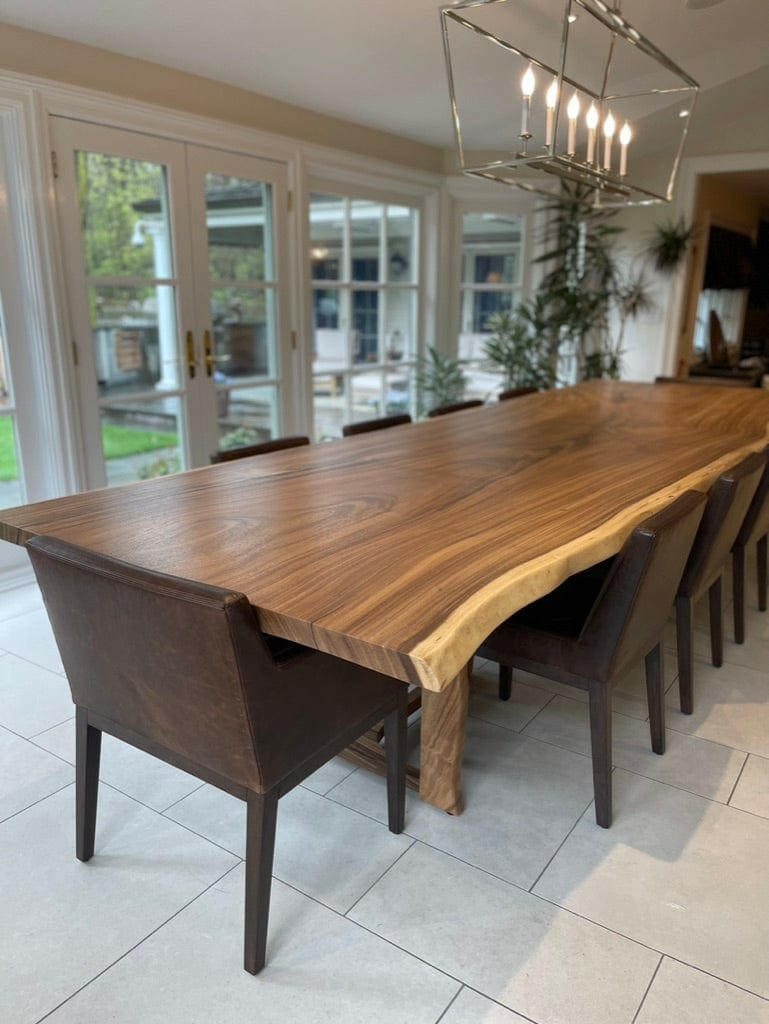A Thorough Take A Look At Table Leg Styles: Finding the Perfect Suit
Choosing the right eating table leg design is important for both aesthetic allure and functional performance. Traditional 4 legs provide timeless style and stability, while the pedestal base supplies enhanced legroom and a modern appearance. For those with larger tables, trestle legs make certain strong support, whereas barrette legs introduce a mid-century modern-day vibe with their minimal style. The x-shaped legs mix contemporary design with enhanced security. Each of these choices brings special benefits, making the option greater than simply a matter of choice. Explore better to discover which design perfectly enhances your dining area and lifestyle.
Conventional 4 Legs
Amongst the numerous kinds of eating table leg styles, the conventional four-leg design remains a timeless selection for several families. 4 legs offer balanced support, guaranteeing the table stays stable and qualified of birthing considerable weight (dining room table legs).
From an aesthetic perspective, the typical four-leg style can be quickly adapted to numerous indoor designs. Whether crafted from wood, steel, or a mix of materials, these legs can be delicately sculpted, sleek and minimalistic, or anything in between. Their adaptability allows them to match both rustic and contemporary settings seamlessly.
Moreover, the uncomplicated structure of the four-leg layout promotes simplicity of movement and placement within a room. Unlike even more complex bases, this style decreases obstructions, providing sufficient legroom for diners. In recap, the traditional four-leg table leg style weds withstanding elegance with functional capability, making it a sharp option for those looking for both type and feature in their eating furniture.
Stand Base
Usually commemorated for its sophisticated and space-efficient layout, the stand base is a distinguished option to the typical four-leg configuration in table leg designs. This distinct base normally features a single central column supporting the tabletop, which can vary in kind, from ornately carved wood to streamlined, modern steel. One of the main benefits of the pedestal base is its capacity to maximize legroom and seating flexibility. Without corner legs, restaurants are afforded better flexibility of movement, making it an optimal option for round and oval tables that advertise more intimate and inclusive gatherings.
In addition, the stand base's central assistance can take care of substantial weight, enabling using heavier table tops, such as marble or thick hardwood. This stamina combined with its aesthetic versatility makes the stand base a popular choice in both traditional and contemporary interior setups. It can seamlessly incorporate with different style themes, from classic beauty to minimal modernity. Furthermore, the main column itself offers a canvas for elaborate designs and imaginative expressions, adding a component of aesthetic passion under the table. In summary, the pedestal base incorporates performance with style, making it an improved and functional option for varied dining environments.
Trestle Legs
Trestle legs provide a durable and ageless structure for eating tables, identified by their straight cross-bracing and tough support beams. Originating from middle ages times, this design has actually developed yet preserved its important structure, making it a seasonal favorite in both typical and contemporary setups. The main trestle beam, commonly supported by 2 or more vertical articles, uses exceptional stability, enabling larger table sizes without the need for added legs.
A considerable benefit of trestle leg tables is the adequate legroom they provide. Unlike tables with 4 edge legs, the absence of blockages at the table's sides offers unobstructed space for chairs and restaurants, improving convenience and availability. This makes trestle tables optimal for fitting larger gatherings, whether in a dining-room or a reception hall.
The visual versatility of trestle legs is useful source noteworthy. Offered in a variety of materials such as timber, metal, and composite, they can be completed to match a vast array of interior designs. From rustic farmhouse to streamlined modern designs, trestle legs can be tailored to suit individual tastes. Their long-lasting charm and useful benefits make trestle legs a compelling selection for those looking for both style and practicality in their table.
Hairpin Legs

The charm of barrette legs depends on their simplicity and adaptability - dining room table legs. Available in a variety of materials, including steel and brass, they can be completed in numerous colors to enhance different interior styles. Whether coupled with a rustic wood tabletop or a contemporary glass surface, hairpin legs easily mix performance with a touch of classic charm
Sturdiness is an additional notable function of hairpin legs. Despite their delicate appearance, these legs are crafted to bear substantial weight, ensuring the dining table continues to be secure and protected. In addition, they are reasonably very easy to set up, making them a prominent selection for DIY enthusiasts and expert furnishings manufacturers alike.
X-Shaped Legs

Built from products such as steel, wood, or a mix of both, X-shaped legs can be tailored to match numerous layout preferences. Steel legs frequently provide a sleek and industrial feel, ideal for loft-style houses and modern-day eating rooms. On the various other hand, wooden X-shaped legs provide a warmer, much more rustic allure, appropriate for farmhouse or eclectic insides. The flexibility in materials permits homeowners to tailor their dining tables to better fit their overall layout plan.
Furthermore, the engineering behind X-shaped legs makes sure also weight circulation, decreasing the threat of wobbling and enhancing resilience. This makes them especially appropriate for bigger table that need extra assistance. Basically, X-shaped legs mix practical engineering with modern aesthetic appeals, making them an ageless option for varied dining atmospheres.
Final Thought
A detailed understanding of dining table leg designs exposes the distinctive attributes and advantages of each layout. Trestle legs guarantee durable assistance for larger tables, and barrette legs present a mid-century modern visual.